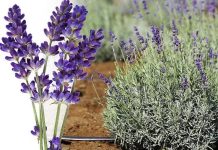Chamomile – The Golden Flower of Folk Medicine

Chamomile — a simple yet remarkably powerful herb — has held a sacred place in traditional healing practices for centuries. Within its delicate white petals and golden heart lies nature’s quiet promise of health and harmony. Folk medicine has long taught that the most potent remedies are often found in the simplest plants, and chamomile is perhaps the best example of this timeless truth.
Botanical Overview
Chamomile (Matricaria chamomilla) is an annual herb belonging to the Asteraceae family. It grows naturally across much of Europe and Asia, thriving in sunny, dry meadows, open fields, and even along country roads. The plant usually reaches 20–40 centimeters in height, with small white petals surrounding a yellow, cone-shaped center that gives chamomile its easily recognizable charm.
A Plant with Ancient Roots
The healing power of chamomile was known to the ancient Egyptians, who associated it with Ra, the sun god, and used it to prepare soothing oils and ointments. The Romans valued chamomile for its ability to reduce fevers and ease breathing difficulties. During the Middle Ages in Europe, it was referred to as the “herb of the soul,” believed to bring calmness and comfort to the weary.
In Georgia and many other regions, chamomile has long been a household remedy. Grandmothers would brew chamomile tea to ease stomach pain, calm restlessness, and help children sleep peacefully. It was considered a must-have in every home’s natural pharmacy — a gentle healer passed down through generations.
Chemical Composition and Healing Properties
Chamomile’s therapeutic power comes from its rich and complex chemistry. The flowers contain essential oils (including chamazulene and bisabolol), flavonoids, organic acids, glycosides, and various vitamins. These components give chamomile a wide range of healing actions:
Anti-inflammatory effect: Chamomile helps reduce inflammation in the skin, mouth, and digestive tract.
Calming and sedative effect: Its tea acts as a natural relaxant, reducing stress, anxiety, and nervous tension while promoting restful sleep.
Antibacterial and antifungal properties: Chamomile essential oil inhibits the growth of harmful microorganisms, making it excellent for skin care and wound healing.
Digestive aid: It soothes stomach cramps, reduces acid reflux, and supports healthy digestion.
Immune support: Regular consumption of chamomile tea helps the body fight infections, especially during cold and flu seasons.
Common Uses of Chamomile
1. Chamomile Tea
The most familiar and beloved form of chamomile. To prepare it, pour one cup of boiling water over a tablespoon of dried chamomile flowers. Cover and steep for 10–15 minutes. Drink warm, without sugar if possible. Chamomile tea relaxes the nervous system, eases stomach discomfort, and improves sleep quality.
2. Compresses and Baths
Chamomile infusions are widely used in folk skin care. A warm chamomile compress can relieve itching, rashes, and allergic irritations. Adding chamomile to bathwater softens the skin, reduces tension, and helps both adults and children relax deeply before bedtime.
3. Inhalation Therapy
During colds or sinus congestion, add a handful of dried chamomile flowers to a bowl of boiling water. Lean over the steam, cover your head with a towel, and inhale deeply for about 10 minutes. This traditional method clears nasal passages and eases breathing.
4. Hair and Skin Care
Chamomile is a classic beauty herb. Rinsing hair with chamomile infusion enhances shine and naturally lightens blonde tones. On the skin, it acts as a gentle toner that soothes redness, calms irritation, and restores natural balance to sensitive complexions.
Chamomile and Emotional Balance
In folk beliefs, chamomile was thought to bring not only physical healing but also emotional peace. Its fragrance was said to “soften heavy emotions” and bring harmony to the heart. Many cultures viewed it as a symbol of happiness and well-being.
Today, chamomile essential oil remains one of the most popular oils in aromatherapy. Its warm, sweet scent reduces anxiety and stress and promotes deep, restorative sleep. Just a few drops in a diffuser can transform the mood of an entire room, creating a sense of serenity and comfort.
Safety and Precautions
Although chamomile is a natural remedy, moderation and awareness are important. People who are allergic to plants in the daisy or ragweed family should avoid using chamomile, as it can cause allergic reactions. Pregnant women, especially during the first trimester, should consult a doctor before consuming chamomile tea or oil.
Overconsumption can lead to dizziness or nausea, so it is best to limit intake to two or three cups of tea per day. As with all herbs, listening to your body is key — gentle remedies work best when used wisely.
Chamomile in Modern Medicine
Modern research has confirmed much of what traditional healers already knew. Clinical studies show that chamomile extracts help reduce mild anxiety, improve sleep quality, and aid digestion. Its anti-inflammatory compounds also play a role in preventing stomach ulcers and soothing skin irritations.
Because of these proven effects, chamomile is a common ingredient in herbal supplements, natural cosmetics, and pharmaceutical formulations. From calming teas to facial creams and baby lotions, chamomile continues to bridge the gap between traditional wisdom and modern science.
Conclusion
Chamomile stands as a shining example of how nature’s simplest gifts can offer the deepest healing. It represents a harmony between body and spirit, science and tradition, medicine and comfort.
Whether sipped as a warm tea on a quiet evening or inhaled as a gentle fragrance to calm the mind, chamomile remains a timeless symbol of peace and care. Sometimes, all you need to restore balance is a single cup of chamomile tea — a fragrant reminder from nature herself that everything will be all right. 🌿












